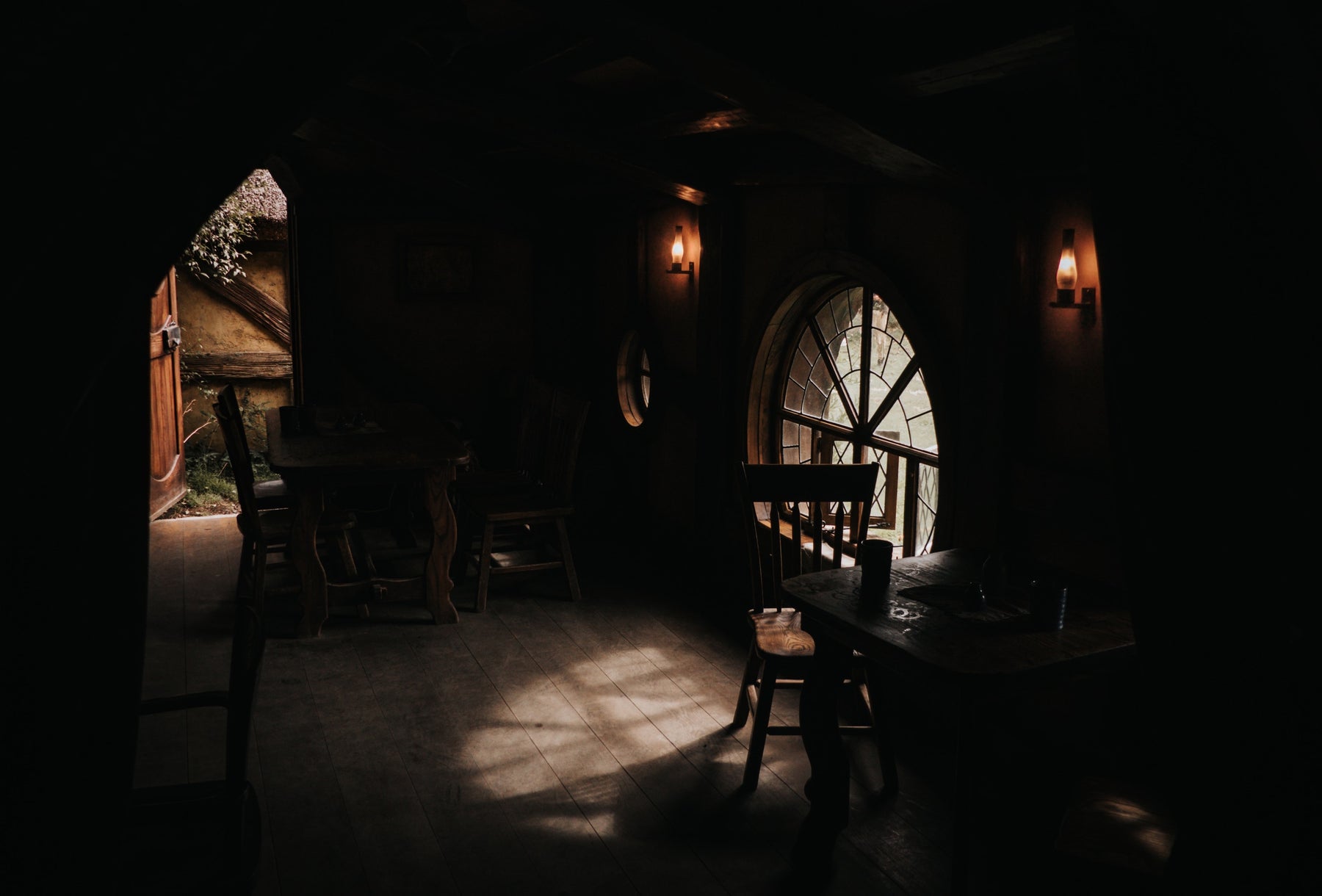
The Importance of Lighting in Film Production
There are hundreds of different elements that go into producing a successful film, from casting, to writing, to the direction. While these elements are what make up the content of the film, the way in which it is presented to the audience is all down to cinematography. The Director of Photography, or cinematographer, has a huge hand in all the visual decisions we see when making a film. This might be the choice between a tracking or a dolly shot, or it can be overseeing the way the set is lit. Lighting might not come across as a vital factor when compared to actors or script, but it’s actually incredibly important in all aspects of film production.
The way a scene is lit dictates so much to the audience, the job of lighting in video production is to communicate the mood, the atmosphere, and to help in telling a story. If you see a film that is poorly lit, it doesn’t matter how good the story is; lighting is vital in showing the audience a narrative. Proper lighting is one of the key elements of good cinematography, essential to ensuring a successful outcome.
Lighting Communicates Mood and Atmosphere
Arguably the most crucial role of lighting in film is to communicate with the audience. Imagine a film lit purely with plain white light, like the inside of a hospital; there’s no ambiance, no mood, nothing to tell the watcher how they should feel at that moment. Bright and colorful lighting brings a cheerful mood, whereas dark and shadowy images invoke feelings of mystery and foreboding. Light brings many characteristics to your set and helps to set the scene, showing the difference between an airy park or a dirty alley.
Lighting is also heavily utilized in building your characters, and can easily communicate the difference between hero and villain. Simple brightness and shadow, when utilized well, can make the audience feel intensely about the actors in a shot. Cast your subject in bright and shining light, and the audience will see them as good, clean, and positive in the story. Shadowy figures are easily interpreted as sinister and mysterious.
Genre and Lighting are Closely Intertwined
Different genres in film can be interpreted in endless different ways, however, lighting is one of the most obvious channels through which to present genre in your film. Lighting in ratios is a measurable way to observe the use of lighting in the genre. A low lighting ratio, one which doesn’t offer too much shadow where most of the scene is well lit, shows the audience a scene or production is lighthearted, perhaps a comedy or a romance. On the other hand, genres like film noir have made excellent use of high light ratios, where your subject is shot half in bright light, and half in dark shadow.
Using light by ratios in this way creates a dramatic image, and gives more depth to your shot. The way you light a set also determines where the eye of the audience is drawn, so it’s imperative that your lighting doesn’t make the audience miss critical details. All other elements of film production boil down to the contents of a shot, the individual elements which make up the film as a whole. The importance of lighting in film production is that it defines how we see this shot, and this can make a huge difference.

Practical Needs and Uses for Lighting in Film
While the human eye can pick up tiny details and make adjustments so that an image makes sense, cameras aren’t quite as advanced as this yet. That’s why lighting must be set up perfectly, down to the tiniest alteration; so that the image comes across without flaw to the audience. For example, when adjusting for color temperature as explained in our article on how to mix daylight and tungsten, our eyes will interpret a white surface as white even when the hue of light shone upon it makes it appear differently. However, cameras can only record the reality, and the surface won’t come across as white on film. This shows how imperative proper lighting is, as when done correctly your lighting setup should eliminate this issue.
Natural light, or daylight, was long the primary source of illumination for filmmakers years ago. However, all the limitations of using light from the sun lead to the creation of an alternative; studio lighting. Without relying on daylight to shoot films, we can now artificially create any sort of lighting inside studios, with complete creative freedom. Without this lighting, filmmakers would still be constrained to filming in daylight, and wouldn’t be able to express their stories in the same way.
When it’s time for the post-production process, the quality of your film's lighting plays an important role once again. Any mistakes and errors from the original shoot need to be corrected at this point, and often this is where the lighting setup will either cost you or save you money. A shot that has been correctly lit can have digital alterations easily completed, whereas errors in lighting can lead to an entire expensive reshoot.
Advancements in Lighting Technology
From the dawn of cinema, lighting has been used to paint a picture on the set, however, modern advancements in lighting technology have made this job much easier. Stanley McCandless is credited for creating the modern stage lighting which forms the basis of what we still use today, way back in 1958. Back when lighting was first becoming an important art in cinema, daylight and candles were the only tools available. Later, oil lamps and gas lights became more accessible, and eventually, electricity became the most versatile way to light a set.
Modern cinematographers use mostly artificial light in today's film production, instead of trying to work around waning daylight and flickering candles. LED panels with barn doors give you full control over the brightness, color, and direction of your light, allowing for many creative decisions and adjustments in order to achieve the perfect outcome. Natural light can still be used to great success, however, the availability of more versatile lighting has brought cinematography to where it is today.
The color, or hue, of a light source, is measured on the Kelvin scale, a tool you can use to perfectly set the tone of your scene. Modern set lighting can be adjusted to a particular measure on the kelvin scale to emulate a different source of light artificially. For example, the color temperature of daylight is around 5600K, but you might need to shoot on an overcast day. Using artificial lighting, you can recreate the appearance of a sunny day without having to wait for the right weather, making film production easier and less expensive.

Shadow is One of the Most Powerful Lighting Tools
Shadow is the opposite of light, and the contrast between the two is where lighting truly becomes an art form. However, shadow isn’t just darkness, the role it has to play is much more complex than that. In film production, we rely on shadows to not only add to the mood and atmosphere but to create depth and texture, giving more dimension to a shot.
There are two different types of shadow: hard and soft. Hard shadow shows much more detail and is ideal to highlight the face of an actor. It makes your subject stand out from the background and brings them forward in the scene. Soft shadow is much less harsh and can be used to blend your subject into the image. This kind of shadow is also much more flattering, and won’t expose small flaws and details you may want to remain hidden.
Shadow is highly effective for creating depth in your image and can build a distinction between the foreground and background of an image. This way, you ensure the audience is paying attention to the right things; a background in shadow is less likely to call the eye away from more important elements of a shot.
Color and Lighting in Film Production
Color is a highly effective tool in invoking an emotional response in the viewer, outside of all the other changeable elements. The hue of your lighting should be carefully considered, as this small detail can make a world of difference to the finished product. Different colors can convey specific emotions, such as blue for sadness, however, it’s important to remember people may interpret colors in different ways. A scene shot with monochromatic light, with just a single color, can create a certain atmosphere in a very effective way. A combination of primary colors can come across as playful and surreal, giving your scene a dreamy quality. On the other hand, analog color lighting is easy on the eyes and natural-looking.
Lighting Will Always be an Essential Part of Cinematography and Film Production
We rely on lighting not only to observe a given shot but to lead us to the correct interpretation. Without the proper lighting setup, it can be next to impossible to convey all the mood and emotion in your film. Brightness, shadow, and color are all vital elements in the way a scene comes across to the audience, they offer a way to control the viewer's emotions, as well as directing them in the story. Without well thought out lighting in film production, you risk flat, lifeless images, whereas properly setup studio light can communicate all of the drama and emotion that filmmakers need for their craft.

Comments
Leave a comment